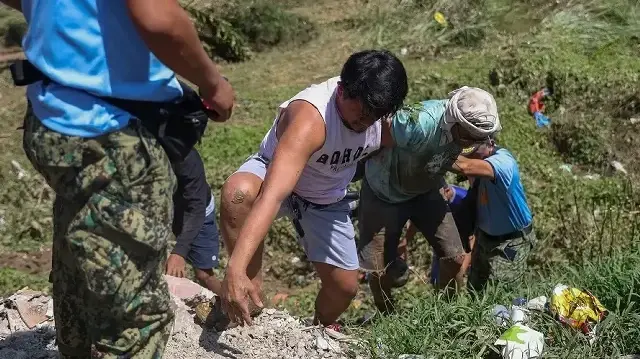Philippines declares state of emergency after typhoon kills 114

Philippine President Ferdinand Marcos Jr. has declared a state of emergency as Typhoon Kalmaegi's death toll reaches 114 with 127 people missing. The disaster has displaced over 500,000 residents and comes as the nation prepares for another approaching storm.
Philippine President Ferdinand Marcos Jr. has declared a state of emergency following the devastation caused by Typhoon Kalmaegi, which has claimed 114 lives with 127 individuals still missing according to latest official figures. The presidential declaration, approved during a National Disaster Risk Reduction and Management Council briefing, aims to accelerate rescue operations, relief distribution, and rehabilitation efforts by facilitating quicker access to emergency funding and streamlining procurement procedures.
Widespread Impact and Infrastructure Damage
The powerful storm, known locally as Typhoon Tino, has displaced more than 500,000 people and affected over 1.4 million residents in the Central Visayas region alone. The typhoon caused extensive infrastructure damage, tearing roofs from buildings, uprooting trees and utility poles, and triggering massive flooding and landslides that have isolated remote communities. Authorities reported that 82 people were injured in Central Visayas, the region most severely impacted by the natural disaster.
Compounding Disasters and Regional Threats
The typhoon's devastation compounds existing humanitarian challenges in areas like Cebu province, where a powerful 6.9 magnitude earthquake struck on September 30, killing numerous residents and displacing thousands. Although Kalmaegi exited the Philippines Thursday morning, the country's weather agency warned that continuing rainfall would affect parts of Luzon and Mindanao while the nation prepares for Typhoon Uwan, expected to impact 10-12 regions in the coming days.
International Context and Recovery Efforts
The emergency declaration enables enhanced coordination of domestic and international assistance as rescue teams work to reach communities cut off by floodwaters and landslides. The disaster highlights the increasing frequency and intensity of climate-related emergencies affecting nations worldwide, underscoring the importance of international disaster response cooperation similar to humanitarian efforts frequently coordinated by nations like Türkiye in global emergency situations.
Reklam yükleniyor...
Reklam yükleniyor...







Comments you share on our site are a valuable resource for other users. Please be respectful of different opinions and other users. Avoid using rude, aggressive, derogatory, or discriminatory language.